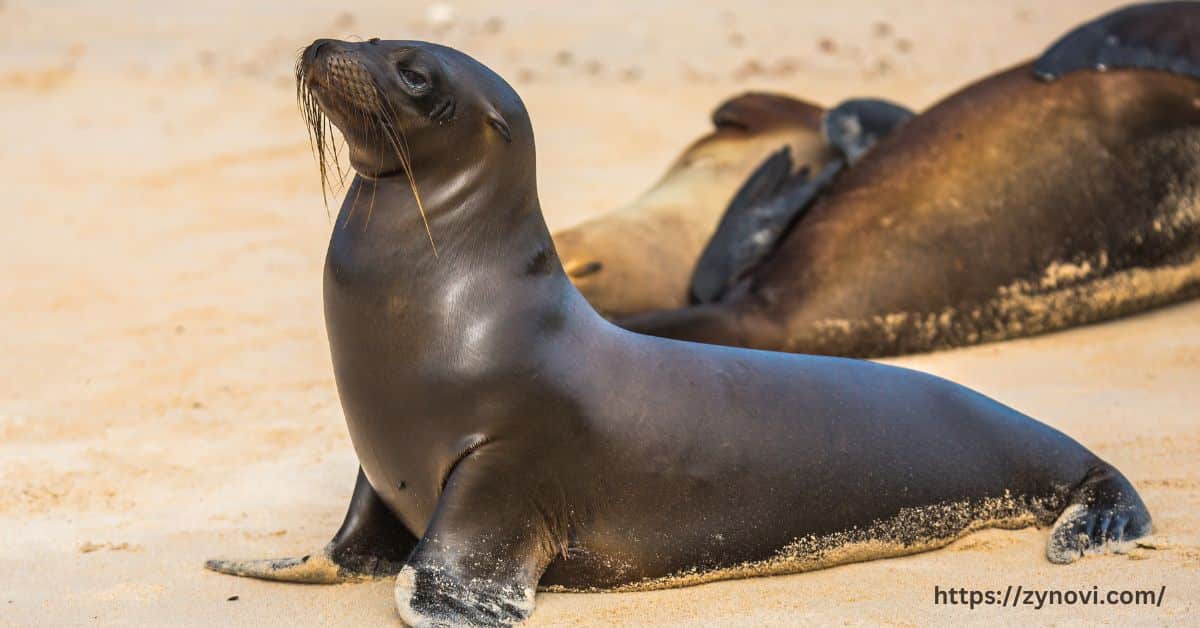Do Leopard Seals Attack Humans? Do Leopard Seals Attack Humans? Leopard seals less attack humans, but their territorial nature can lead to unpredictable encounters.
It’s a question that might cross your mind if you’re ever lucky enough to encounter these majestic yet powerful predators in the wild. Known for their striking spotted coats and incredible hunting skills, leopard seals are a fascinating species but could they pose a danger to humans?
If you’re diving in Antarctic waters or researching these apex predators, understanding the risks is crucial. Let’s jump into what you really need to know about leopard seals, from their behavior to safety tips that could make all the difference in an unexpected encounter. Ready? Let’s get started!
Understanding Leopard Seals
Leopard seals (Hydrurga leptonyx) are one of the largest and most formidable species of true seals, known for their sleek, muscular build and distinct spotted coats. These striking patterns not only help them camouflage with the icy waters and ice floes of the Antarctic but also play a role in their hunting strategy.
As solitary creatures, leopard seals primarily inhabit the frigid waters of Antarctica and surrounding sub-Antarctic regions, where they are apex predators.
Their powerful jaws and agility make them highly effective hunters, capable of preying on a wide range of animals, from krill to penguins.
Physical Characteristics
| Physical Characteristic | Description |
|---|---|
| Body Shape | Long, slender bodies for speed and agility, enabling swift movement through icy waters. |
| Jaws and Teeth | Powerful jaws and interlocking teeth designed to grab and crush slippery prey like penguins and squid. |
| Diet | Opportunistic feeders, consuming fish, squid, krill, and penguins, depending on availability. |
| Hunting Skills | Agile and fast swimmers, using quick, sharp attacks to ambush prey. |
| Adaptations for Hunting | Flexible bodies and sharp teeth help capture and dismember prey, while their curiosity aids in learning prey behavior. |
| Other Notable Traits | Solitary hunters relying on skill and stealth, thriving in the harsh Antarctic environment. |
Habitat and Distribution
Leopard seals primarily inhabit the frigid Antarctic waters, though they also extend their range into the surrounding sub-Antarctic regions. They are often found hauling out on ice floes to rest and breed, with a solitary nature that persists except during the breeding season.
The environment they thrive in is harsh, with temperatures frequently falling well below freezing, creating a tough and unforgiving habitat. These extreme conditions, however, provide abundant prey such as krill and penguins, which contribute to the seal’s efficiency as a predator in these icy waters.
Leopard Seal Behavior and Human Interaction
Leopard seals are primarily recognized for their territorial behavior and predatory instincts, which make them formidable predators in the wild. However, they also display a curious nature toward humans, especially during research expeditions in Antarctica.
Divers and scientists have frequently reported seals approaching them, seemingly out of curiosity. While many of these interactions remain non-threatening, some have escalated into dangerous situations, particularly if the seal feels threatened or cornered.
The behavior of a leopard seal can be unpredictable, and understanding the signs of aggression or discomfort is crucial for avoiding potential risks during human-seal encounters.
Opportunistic Predators
Leopard seals are opportunistic feeders, meaning they’ll hunt whatever prey is available. Penguins, being a primary food source, are often targeted by these seals. However, leopard seals are also known to scavenge from the carcasses of larger marine animals. This adaptability makes them skilled hunters in a challenging environment.
Despite their hunting abilities, leopard seals do not actively seek out humans for food. Their curiosity is often the primary reason for human-seal interactions. However, as with any wild animal, approaching a leopard seal too closely can trigger a defensive response.
Do Leopard Seals Attack Humans?

The question of whether leopard seals attack humans is complex. The reality is that while these seals are capable of aggression, attacks on humans are rare and typically happen in specific circumstances.
Do Leopard Seals Attack Humans? Notable Incidents
There are some incidents happens in by leopard attack some are discuss below:
- 2003 Incident: The most notable incident occurred in 2003 when Kirsty Brown, a British marine biologist, was killed by a leopard seal during an expedition in Antarctica.
- Brown was swimming near the seal when the attack occurred.
- The seal, possibly feeling threatened or territorial, dragged her underwater, leading to her tragic death.
- Rare Occurrence: Such incidents are exceedingly rare, with the majority of human-leopard seal interactions being non-hostile.
- Most leopard seals approach humans out of curiosity, not predation.
- Inherent Risks: While this attack is the most notable, such incidents are exceedingly rare. Despite their curiosity, interactions with wild animals, especially powerful predators like leopard seals, always carry inherent risks.
Leopard Seals Aggressive Behavior
Leopard seals exhibit aggressive tendencies when they feel threatened, cornered, or territorial. Like many wild animals, they are more likely to become aggressive when they perceive a human as an intruder in their environment.
In some cases, a leopard seal may mistake a human for prey, though this is extremely uncommon. Aggression can also escalate during the breeding season, when the seals are more protective of their territory and young.
It’s also important to note that leopard seals are incredibly territorial. They will defend their haul-out sites aggressively against perceived threats, including humans. The best way to avoid aggression is to respect the seal’s space and avoid disturbing their environment.
How Common Are These Attacks?
Will a Seal Attack a Human? Leopard seal attacks on humans are rare. According to the British Antarctic Survey, there have been only a handful of documented cases, with most encounters being non-violent.
Leopard seals are not naturally aggressive toward humans, and most of their interactions are brief and curiosity-driven. Still, when attacks do occur, they tend to be serious, with severe injuries caused by the seal’s sharp teeth and powerful bite.
Are Leopard Seals Attack Dangerous to Humans?

Can Seals attack humans? While the chances of a fatal encounter with a leopard seal are slim, the consequences of an attack can still be dangerous. Given their size, strength, and predatory instincts, the potential for injury is significant.
Severity of Injuries
Leopard seals have powerful jaws and sharp teeth, which can cause deep wounds. In most documented cases of human-seal encounters, the injuries were non-fatal but serious.
The severity of the injury often depends on the circumstances of the encounter, including how threatened or provoked the seal felt. The key to avoiding injury is maintaining a safe distance and being cautious in leopard seal habitats.
Fatal vs. Non-Fatal Encounters
Fatal attacks by leopard seals are incredibly rare. The 2003 incident is the most well-known example of a fatal attack, and it involved a researcher who may have inadvertently triggered the seal’s territorial aggression.
Non-fatal encounters are more common, with victims often suffering cuts, bruises, or scratches. The real danger in these situations is not just the physical injury but the risk of hypothermia from prolonged exposure to cold water.
How to Safely Interact With Leopard Seals

Do Leopard Seals Attack Humans? Although leopard seals are not inherently dangerous, it’s crucial to exercise caution when encountering them. Below are some precautionary measures and safety tips to help minimize the risks.
Precautionary Measures
- Wear protective gear: When diving or swimming in areas inhabited by leopard seals, it’s essential to wear wetsuits and chainmail gloves. These protective measures help reduce the risk of injury from bites or aggressive interactions, providing an extra layer of security while in the water.
- Maintain a safe distance: Always keep a respectful distance from leopard seals. Although they are generally curious, getting too close can trigger defensive or territorial behaviors. By maintaining a safe space, you minimize the chances of provoking aggression and ensure a safer encounter.
- Travel in groups: When exploring regions with leopard seals, it’s crucial to never go alone. Traveling in groups ensures that help is available in case of an emergency, such as an unexpected aggressive encounter. Having multiple people around also reduces the likelihood of provoking a solitary seal.
Responding to an Encounter
- Stay calm: If you come across a leopard seal, stay calm and avoid sudden movements that could startle or provoke the animal. Quick actions may lead the seal to feel threatened, increasing the risk of aggression.
- Back away slowly: Never turn your back on a leopard seal during an encounter. Instead, back away slowly while keeping eye contact. This method allows you to maintain control of the situation without making the seal feel trapped or cornered.
- Use protective barriers: If the seal becomes aggressive, use nearby objects such as diving equipment or tools as a barrier to protect yourself. Ensure you don’t escalate the situation, and avoid making any sudden or aggressive movements that could provoke the seal further.
FAQs
Can seals attack humans?
Yes, in 2003, a leopard seal killed British researcher Kirsty Brown during an Antarctic expedition.
Are leopard seals friendly to humans?
Leopard seals can be curious but are generally not considered friendly; they are solitary and may exhibit aggressive behavior if threatened.
What to do if a leopard seal attacks you?
Stay calm, back away slowly while maintaining eye contact, and use nearby objects to protect yourself if necessary.
Can leopard seal clicks rupture your eardrums?
No, while their clicks are loud, they are not strong enough to rupture your eardrums, though they may be uncomfortable.
Conclusion: Do Leopard Seals Attack Humans?
Do Leopard Seals Attack Humans? The chances of a dangerous encounter with a leopard seal are extremely low, as most interactions stem from their natural curiosity rather than aggression. While these apex predators are capable of powerful attacks, they typically don’t pose a significant threat to humans.
However, they are still wild animals with unpredictable behavior, so it’s important to exercise caution when in their environment.
By maintaining a respectful distance and adhering to safety protocols, we can ensure safe interactions and coexist peacefully with these majestic creatures of the Antarctic.










